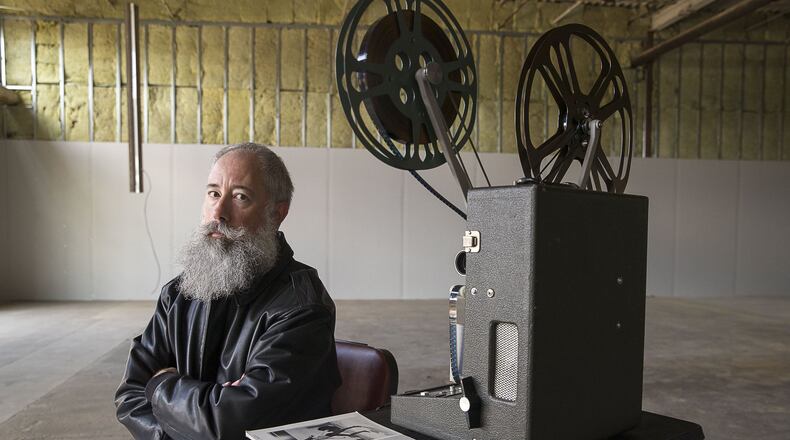With his Campbell’s soup cans, Polaroids of celebrities and his silver wig and deadpan demeanor, Pop progenitor Andy Warhol is one of the 20th century’s most well-known artists.
But in addition to his notoriety as a sculptor, painter and media star, Warhol was also “the most revolutionary of all filmmakers,” said connoisseur of avant-garde cinema Jonas Mekas upon screening his 1964 film “Empire.”
Atlanta audiences have the opportunity to experience the Pop artist's radical filmmaking experiment when local film curator Andy Ditzler screens "Empire" in its entirety Saturday for an event presented in conjunction with the arts residency program Hambidge Center. Ditzler will introduce the film and also lead a post-screening discussion.
Anyone wanting to dip a toe into American avant-grade film would be encouraged to check out Warhol’s architectural epic “Empire,” an eight-hour black-and-white silent opus that regards New York City’s Empire State Building from a static position.
Shot from the 41st floor of the Time & Life Building with a 16mm Arriflex camera from 8:06 p.m. to 2:42 a.m., the film observes the building as day turns to night. “Empire” joins other Warhol experiments in durational cinema like the five-hour plus film “Sleep,” which documented Warhol’s partner John Giorno taking a nap or his 45-minute “Eat” (1963), which featured artist Robert Indiana eating a mushroom in real-time.
Though it’s not the longest film ever made (that distinction currently belongs to the 857-hour Swedish experimental art film “Logistics”), at 8 hours and 5 minutes, “Empire” challenges any traditional notion of film as a medium founded on easily digestible, narrative-centric entertainment.
The star of Warhol’s “Empire” was a true New York icon, so ubiquitous as to be sometimes overlooked. The point of “Empire” was to compel viewers to consider not just the building itself (then the tallest in New York City) in all of its beauty and monumentality, but also the nature of film to record and render life in real-time. Not simply a means of telling stories, film could be a meditative and inquisitive form, allowing for extended consideration of the world around us. For Warhol, and other experimental filmmakers, film was an object as worthy of contemplation as a painting or a sculpture.
Andy Ditzler’s “Film Love” film series, which exhibits experimental films at venues around Atlanta has one goal, says the curator: “to make great but underappreciated films accessible to people.”
There’s no better illustration of that mission than taking Warhol’s rarely screened but notorious film — which is unavailable on video — and screening it as it was initially intended to be shown: projected in slow motion at 16 frames per minute for a running time of 8 hours. Warhol wanted the screening time to correspond with the time frame of an average worker’s day. Ditzler says it’s also important to see “Empire” in its original format because of the almost painterly quality of 16mm in which the film grain is visible, which adds to the unique experience.
“It’s audacious in the combination of its length; its static imagery and its emphasis on the building at nighttime,” notes Ditzler.
“Very, very few people saw it, but lots of people discussed it because it was easy to describe without seeing. So it gained Warhol further notoriety and helped bring mainstream attention to underground film” says Ditzler of the significance of Warhol’s film.
“It’s an event as much as a film,” he continues. “All you need to bring is curiosity.”
In addition to Saturday’s screening, on October 15 Ditzler will screen the final reel of “Empire,” in which the Empire State Building is shrouded in darkness, at Grant Park’s Beautiful Briny Sea.
“Empire”
October 12, noon-8 p.m. Free but seating is limited. Tickets should be reserved via Eventbrite. The Works Upper Westside, 1235 Chattahoochee Avenue, NW. 706-746-5718 hambidge.org
“Empire,” final reel
October 15, 7:30 p.m., $7. Beautiful Briny Sea, 408 Woodward Ave. SE, Atlanta. filmlove.org
About the Author
Keep Reading
The Latest
Featured


